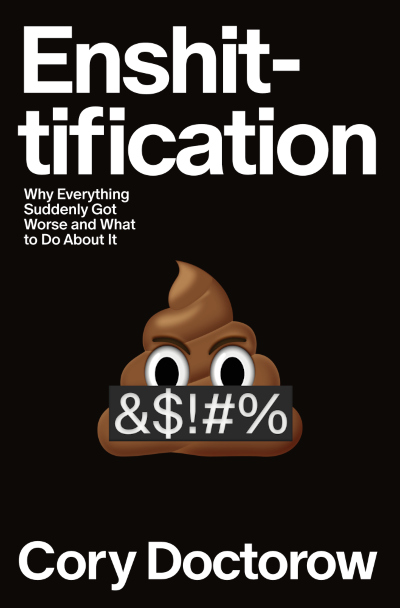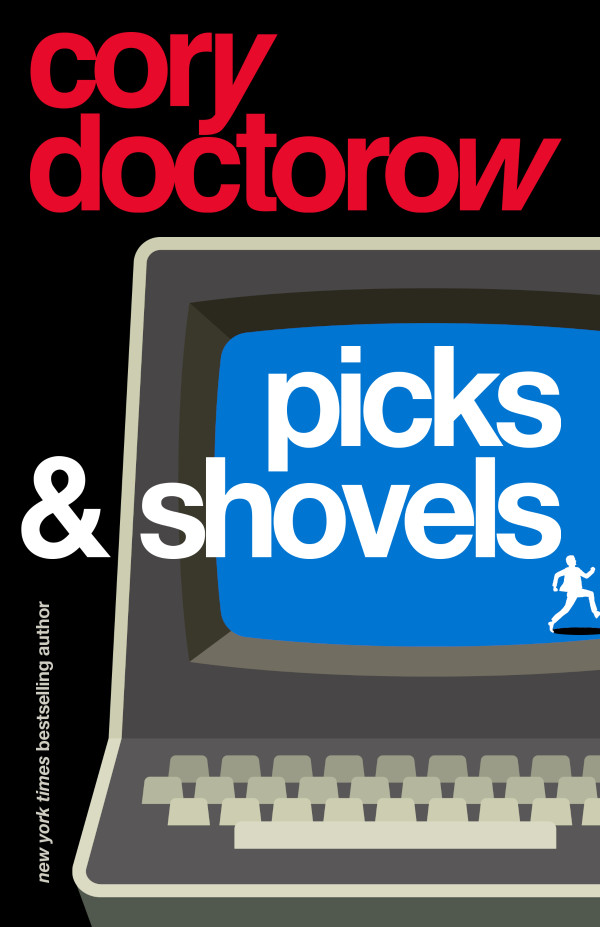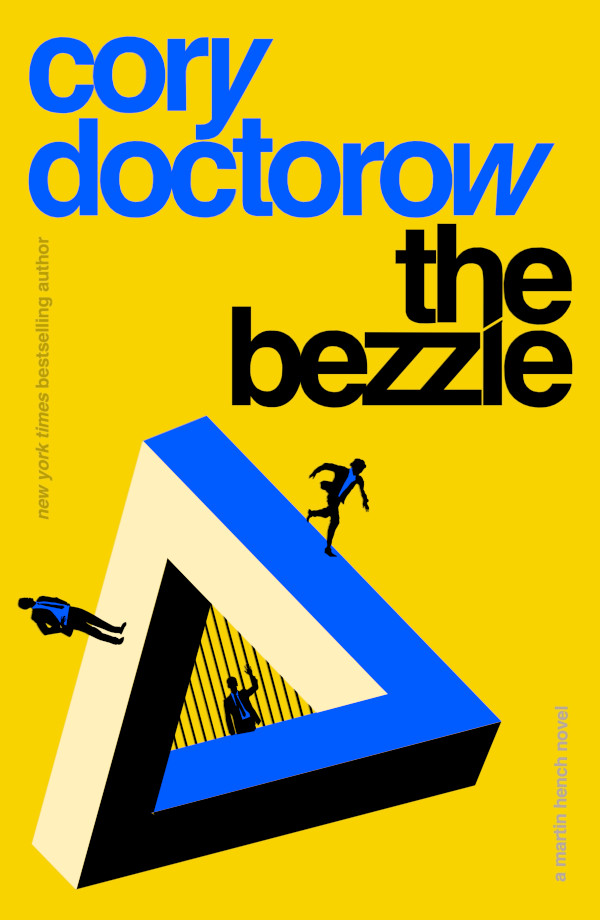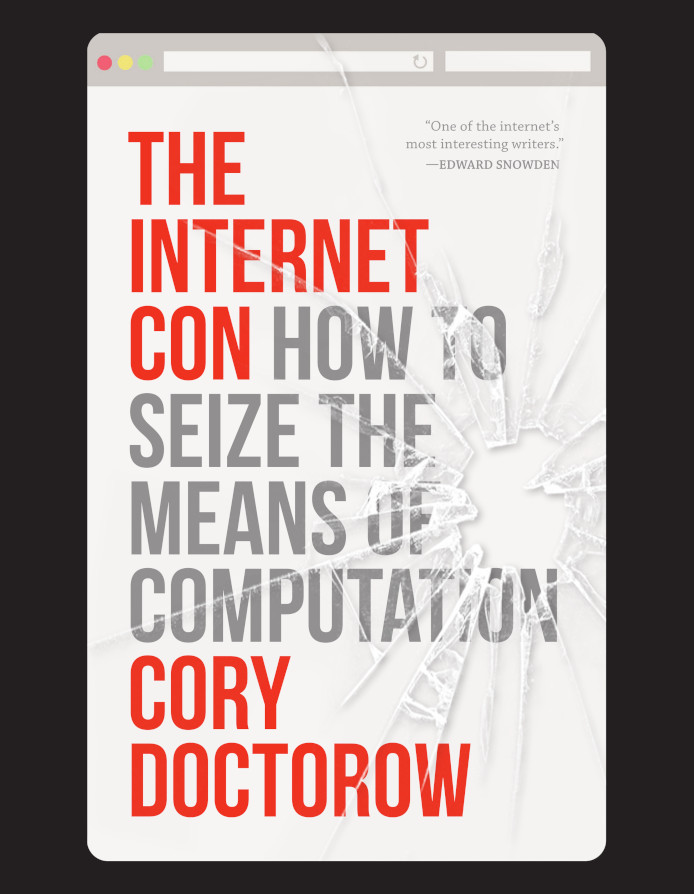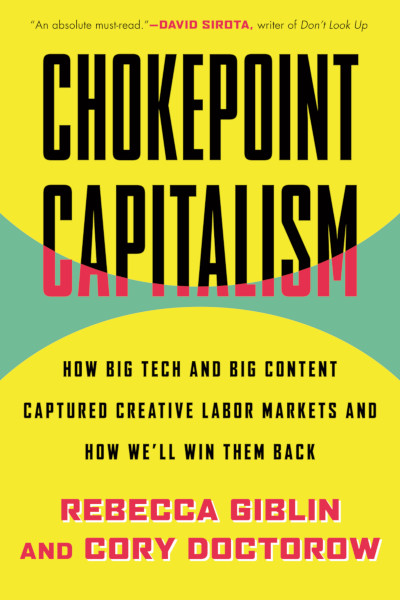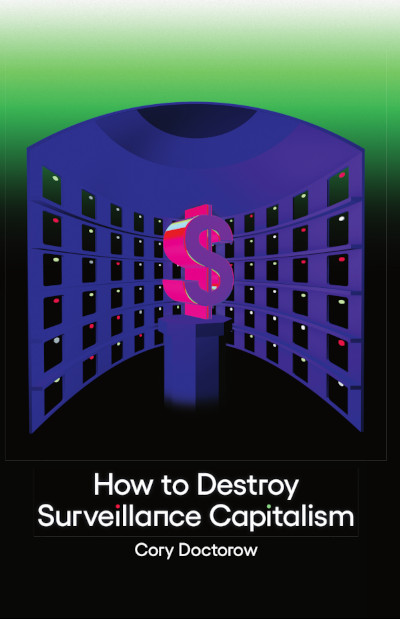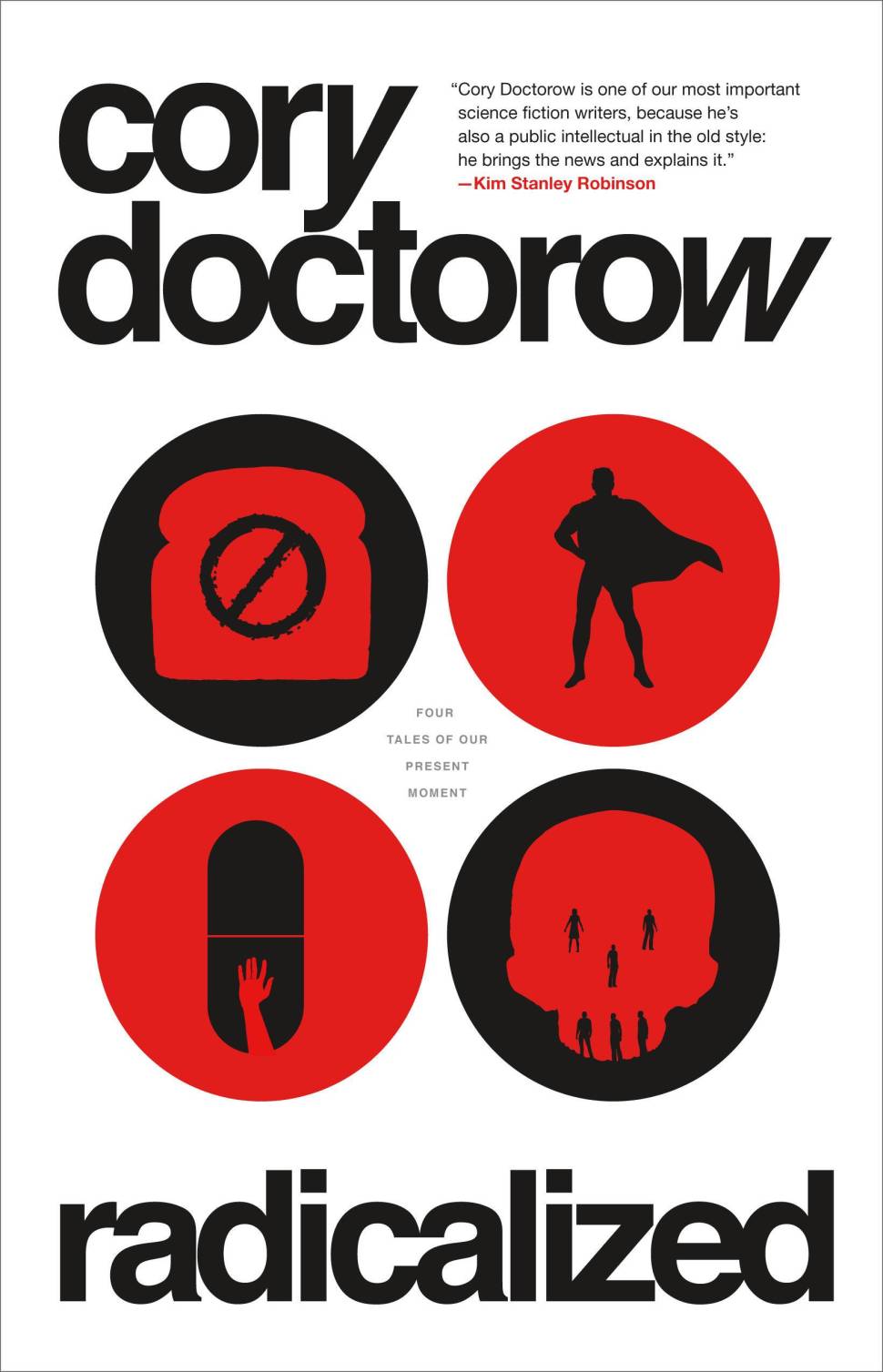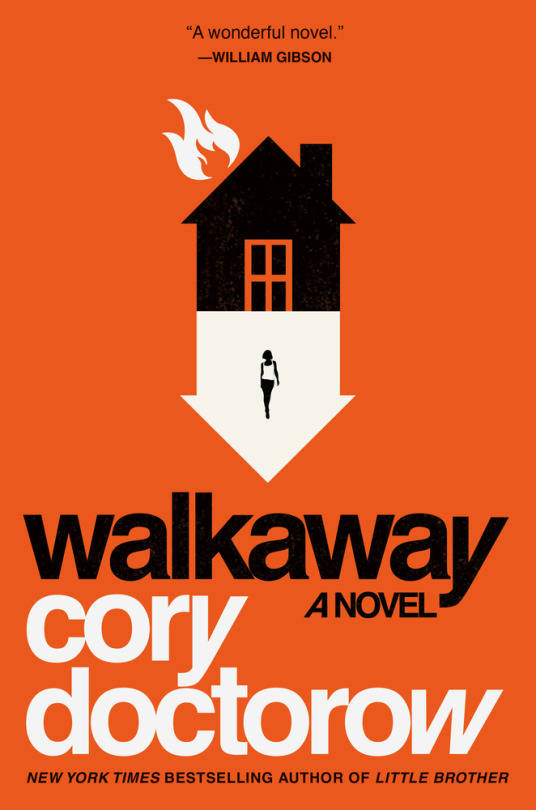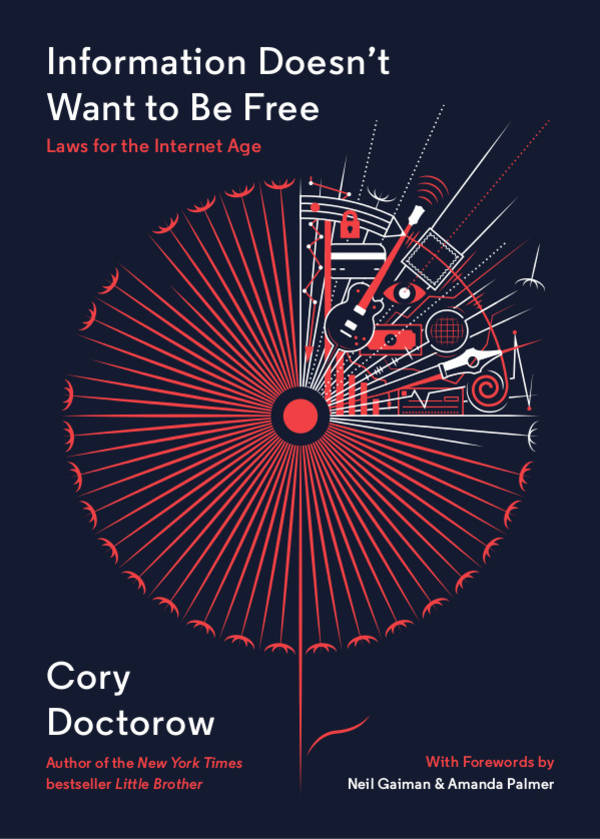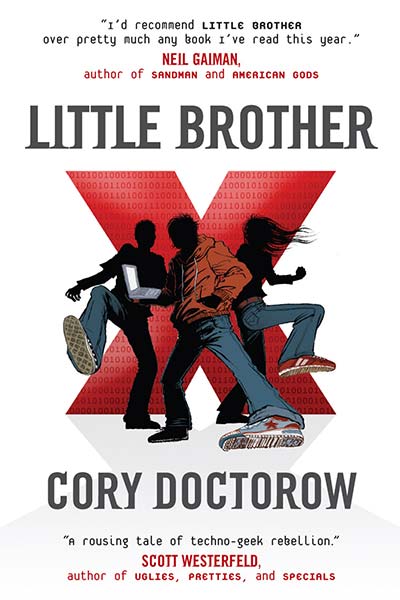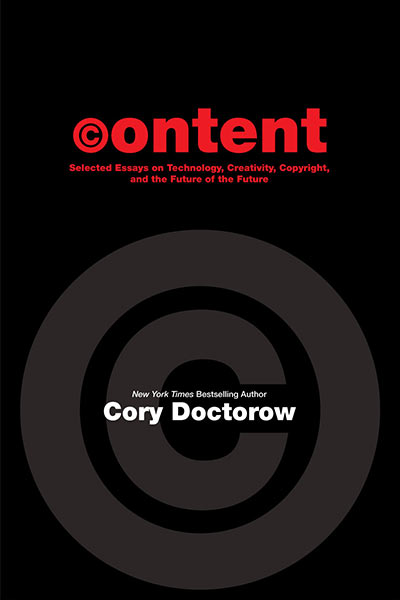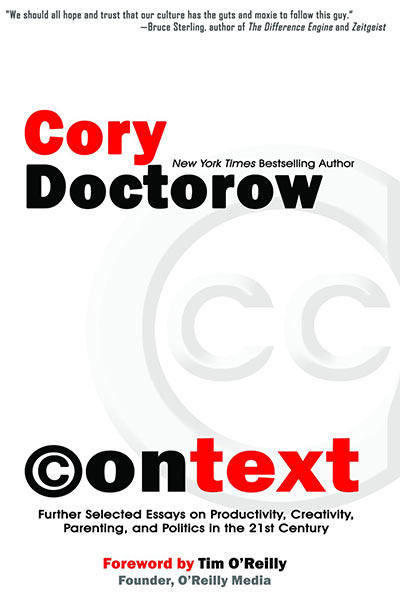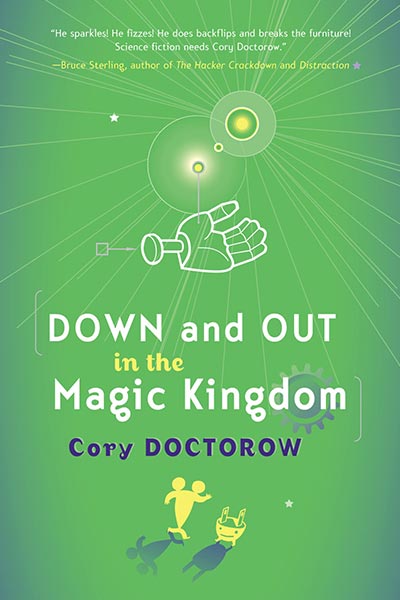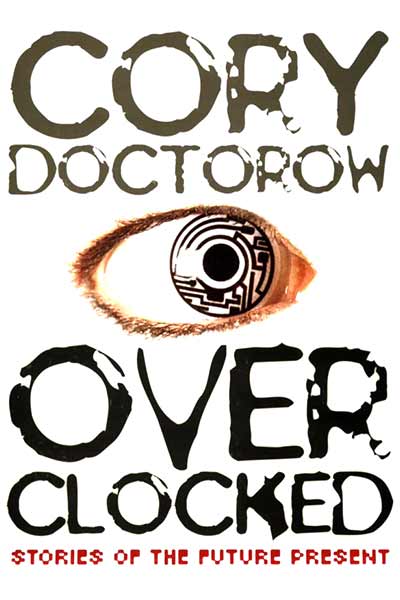
“Affordances” is my new science fiction story for Slate/ASU’s Future Tense project; it’s a tale exploring my theory of “the shitty technology adoption curve,” in which terrible technological ideas are first imposed on poor and powerless people, and then refined and normalized until they are spread over all the rest of us.
more
Henry Jenkins (previously) is the preeminent scholar of fandom and culture; Colin Maclay is a communications researcher with a background in tech policy; on the latest episode of their “How Do You Like It So Far” podcast (MP3), we had a long discussion about a theory of change based on political work and science fictional storytelling, in which helping people imagine a better world (or warn them about a worse one) is a springboard to mobilizing political action.
Talking science fiction, technological self-determination, inequality and competition with physicist Sean Carroll
Sean Carroll is a physicist at JPL and the author of many popular, smart books about physics for a lay audience; his weekly Mindscape podcast is a treasure-trove of incredibly smart, fascinating discussions with people from a wide variety of backgrounds.
more

In my latest podcast (MP3), I read my short story “Materiality,” which was commissioned for Gross Ideas: Tales of Tomorrow’s Architecture, a book edited by Edwina Attlee, Phineas Harper and Maria Smith that is part of the Oslo Architecture Triennale.
more
I’m something of a Bitcoin skeptic; although I embrace the ideals of decentralization and privacy, I am concerned about the environmental, technological and social details of Bitcoin. It was for that reason that I was delighted to spend a good long time chatting with the hosts of the Bitcoin Podcast (MP3), digging into our points of commonality and difference; despite a few audio problems at the start, the episode (and the discourse) were both fantastic.
On November 11, the Edgeryders nonprofit assocation is bringing me to Brussels for a day-long event called The Science Fiction Economics Lab, where I’ll be jointly keynoting with Edgeryders economist Alberto Cottica, a lifelong science fiction fan, about radical futuristic economic ideas for a more cooperative, sustainable future.
more

In my latest podcast (MP3), I read my Green European Journal short story about the terrible European Copyright Directive which passed last March, False Flag. Published in December 2018, the story highlights the ways in which this badly considered law creates unlimited opportunities for abuse, especially censorship by corporations who’ve been embarassed by whistleblowers and activists.
The crew couldn’t even supply their videos to friendly journalists to rebut the claims from the big corporate papers. Just *linking* to a major newspaper required a paid license, and while the newspapers licensed to one another so they could reference articles in rival publications, the kinds of dissident, independent news outlets that had once provided commentary and analysis of what went into the news and what didn’t had all disappeared once the news corporations had refused to license the right to link to them.
Agata spoke with a lawyer she knew, obliquely, in guarded hypotheticals, and the lawyer confirmed what she’d already intuited.
“Your imaginary friend has no hope. They’d have to out themselves in order to file a counterclaim, tell everyone their true identity and reveal that they were behind the video. Even so, it would take six months to get the platforms to hear their case, and by then the whole story would have faded from the public eye. And if they *did* miraculously get people to pay attention again? Well, the fakers would just get the video taken offline again. It takes an instant for a bot to file a fake copyright claim. It takes months for humans to get the claim overturned. It’s asymmetrical warfare, and you’ll always be on the losing side.”
![]()
Last week, the Escape Pod podcast published part one of a reading of my YA novella “Martian Chronicles,” which I wrote for Jonathan Strahan’s Life on Mars anthology: it’s a story about libertarian spacesteaders who move to Mars to escape “whiners” and other undesirables, only to discover that the colonists that preceded them expect them to clean the toilets when they arrive.
more

In my latest podcast (MP3), I read my Globe and Mail column, Why do people believe the Earth is flat?, which connects the rise of conspiratorial thinking to the rise in actual conspiracies, in which increasingly concentrated industries are able to come up with collective lobbying positions that result in everything from crashing 737s to toxic baby-bottle liners to the opioid epidemic.
From climate denial to anti-vax to a resurgent eugenics movement, we are in a golden age of terrible conspiratorial thinking, with real consequences for our species’ continued survival on our (decidedly round) planet.
Ideas spread because of some mix of ideology and material circumstances. Either ideas are convincingly argued and/or they are delivered to people whose circumstances make them susceptible to those ideas.
Conspiracies aren’t on the rise because the arguments for them got better. The arguments for “alternative medicine” or against accepted climate science are no better than those that have lurked in the fringes for generations. Look up the 19th-century skeptics who decried the smallpox vaccine and you’ll find that anti-vax arguments have progressed very little in more than a century.

Firstsecond (publishers of In Real Life, the bestselling middle-grades graphic novel Jen Wang and I made) have just revealed the cover for Poesy the Monster Slayer, my first-ever picture book, illustrated by Matt Rockefeller and scheduled for publication in July 2020.
more
